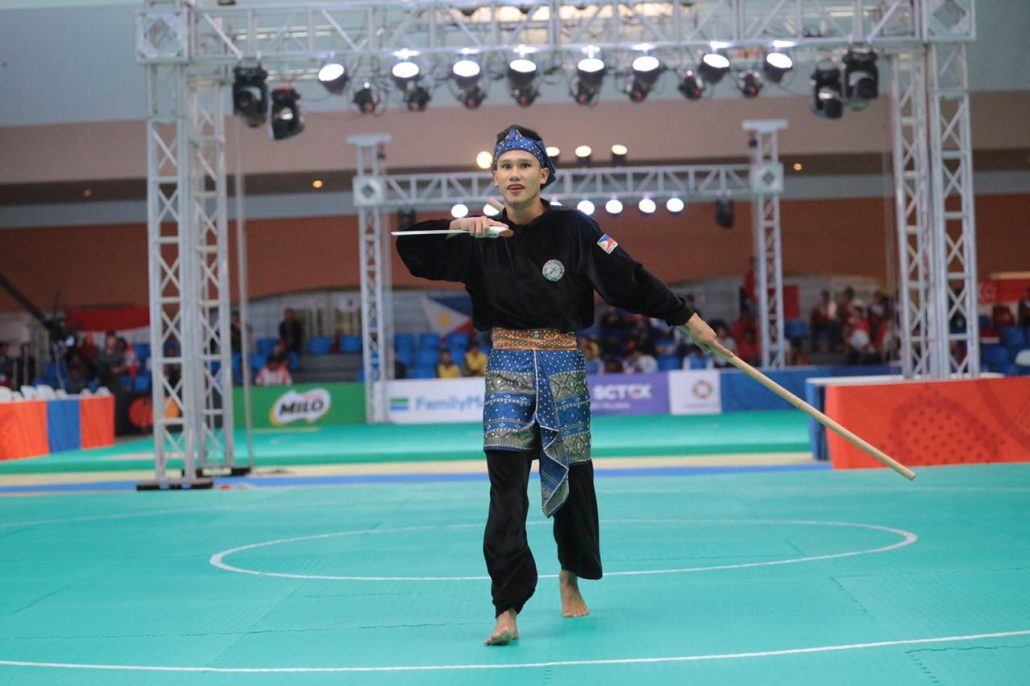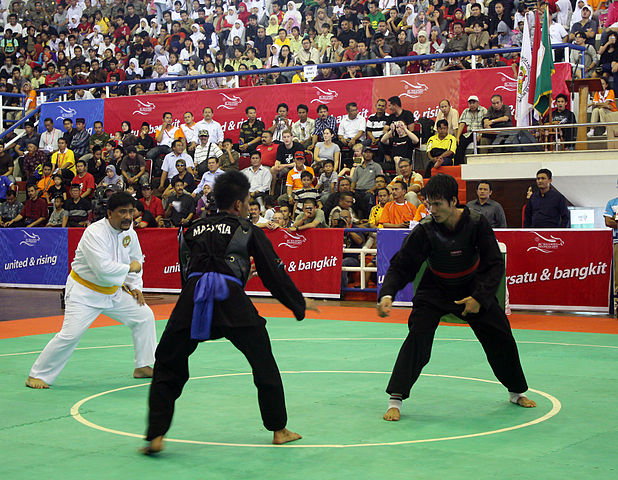

In particular, it is very complicated to determine when and from where pencak silat begun, and who pioneered its spreading. It is not easy to trace back the history of pencak silat because written documentation is limited and oral information handed down from the guru or masters cannot fully answer all the riddles. Some are poetic, some are named after an animal’s movement, and some are metaphors. Training in silat includes cultural, spiritual, and mental aspects as well as tumbling, striking, kicking, blocking and agility movements. To assume that they are all similar is oversimplification. Whichever silat style, each is unique and stands on its very own. Some silat are performed with Malay drums or other musical instruments while more vigorous and less rhythmic silat are not. In Malaysia, the words silat or seni silat are frequently used rather than pencak silat. Pentjak silat, also spelled pencak silat, means to defend oneself. In Indonesia, the art is commonly referred to as pentjak silat. Yet another meaning of silat is simply “to ward off”. Fact|date=January 2008 Another definition defines silat as the Malay art and science of armed and unarmed combat. The Malay dictionary defines silat as a seni (art) with the intelligence to attack and defend gracefully. Fact|date=January 2008 The definition of the word silat varies from one guru or cikgu (teacher) to another.



Silat is the combative art of fighting and survival believed to have originated from ancient Malaysian and Indonesian civilizations. Only two instructors (Sabuk Merak/Red Sash) remain in N.America teaching Jati Wisesa - Loki Jorgenson (Vancouver) and Jody Meyers (Kelowna).Silat (also called Pencak Silat) refers to a family of martial arts native to Southeast Asia. Maha Guru Roedy can be reached at wiranatakusumah01(at)yahoo.ca He has since returned to Indonesia where he continues to train and teach. Maha Guru Roedy Wiranatakusumah previously resided and taught Jati Wisesa Pencak silat in Vancouver Canada at the Indonesian consulate.
#Pencak silat styles free
Each is learned in strict form, performed as a free form dance kembangan (flower) and applied as a practical technique buah (fruit). Initial training in Jati Wisesa is built upon the core set of jurus (forms). The body conditioning usually is done through breathing exercises which build the inner strength (rasa) and sharpen the five senses. Breaking, twisting, a variety of elbow and take-down techniques with the aid of body weight combined with agile movements mark this style distinctively from other silat styles. The distintive langkah (in this case, footwork) play an important role in coordinating the technical purpose and penetration of the jurus. The elements of the style consist of 25 jurus (movements/forms), 10 pernafasan (breathing forms), 9 langkah (extended forms), and a wide variety of two-person training drills. Presently this style is under the supervision of Guru Besar Bapak A. This style of Pencak Silat was founded by the last Maha Guru "AJI" (GADJAH PUTIH or White Elephant) of Garut in West Java in the early 1950's.


 0 kommentar(er)
0 kommentar(er)
